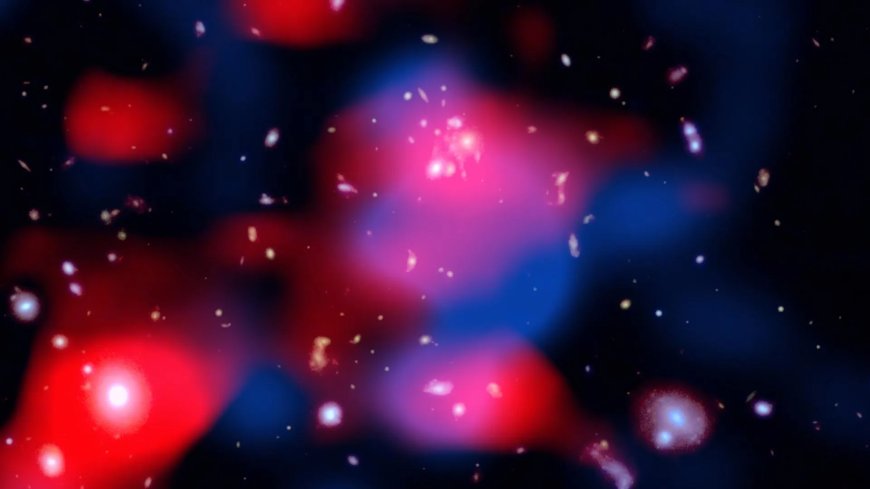Astronomers Discover Record-breaking 10-billion-year Radio Halo in Distant Galaxy Cluster
Astronomers have found a 'mini halo' of energetic particles surrounding one of the most distant galaxy clusters ever observed, shedding light on the forces shaping the cosmos. This discovery, published in The Astrophysical Journal Letters, reveals that galaxy clusters have been influenced by high-energy particles since the early universe. The findings suggest that black holes and cosmic particle collisions may have played a role in energizing galaxy clusters for billions of years.

Astronomers have discovered a vast cloud of energetic particles, known as a 'mini halo,' surrounding one of the most distant galaxy clusters ever observed. This marks a significant advancement in understanding the hidden forces that influence the cosmos.
The mini-halo is located at a distance so immense that it takes light 10 billion years to reach Earth, making it the most distant discovery to date, doubling the previous known distance in science.
This finding reveals that entire galaxy clusters, which are among the largest structures in the universe, have been immersed in high-energy particles for a significant portion of their existence.
A mini-halo comprises highly energetic, charged particles in the space between galaxies within a cluster, emitting radio waves detectable from Earth.
Accepted for publication in The Astrophysical Journal Letters, the study demonstrates that even in the early universe, galaxy clusters were already influenced by energetic processes.
The international team of researchers, co-led by Julie Hlavacek-Larrondo of Université de Montréal and Roland Timmerman of the Institute for Computational Cosmology of Durham University, analyzed data from the Low Frequency Array (LOFAR) radio telescope. While studying the galaxy cluster SpARCS1049, they detected a faint, widespread radio signal originating from a vast region filled with high-energy particles and magnetic fields.
Spanning over a million light-years, this diffuse glow indicates the presence of a mini-halo, a structure previously observed only in the nearby universe. Hlavacek-Larrondo described it as a 'vast cosmic ocean' where galaxy clusters are continuously immersed in high-energy particles.
Timmerman added that finding such a strong radio signal at this distance is astonishing, suggesting that these energetic particles have been shaping galaxy clusters throughout the universe's history.
There are two probable explanations for the mini-halo's formation. One involves supermassive black holes at the centers of galaxies within a cluster ejecting high-energy particles into space. The second explanation is cosmic particle collisions within the hot plasma of the galaxy cluster.
This discovery offers insights into the early formation of galaxy clusters, revealing that they have been enriched with high-energy particles for billions of years longer than previously thought. It also sheds light on the origins of these particles.
With the development of newer telescopes like the Square Kilometer Array (SKA), scientists aim to explore the role of magnetic fields, cosmic rays, and energetic processes in shaping the Universe further.
'We are just scratching the surface of how energetic the early Universe really was,' said Hlavacek-Larrondo. 'This discovery provides a new perspective on how galaxy clusters evolve, influenced by black holes and high-energy particle physics.'
According to the source: ScienceDaily.
What's Your Reaction?
 Like
0
Like
0
 Dislike
0
Dislike
0
 Love
0
Love
0
 Funny
0
Funny
0
 Angry
0
Angry
0
 Sad
0
Sad
0
 Wow
0
Wow
0






















































































































































